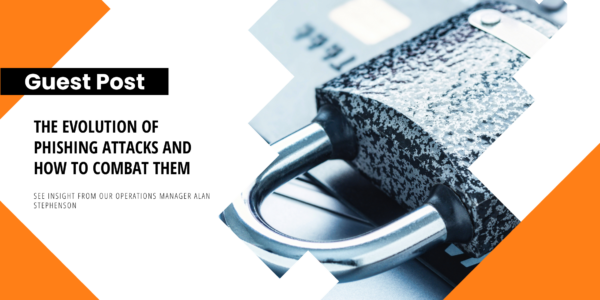Guest Post from Taylor Tabusa Key Points DMARC (Domain-based Message Authentication, Reporting, and Conformance) is…

5 Things You Should Be Doing to Protect Your Business
Cybersecurity threats can affect all businesses, from those in healthcare to commercial construction. And, unfortunately, the effects are often detrimental, resulting in significant data loss and client or patient exposure.
Cybersecurity threats can be proven by the numbers:
A study found that 22.8 million people were affected by healthcare security breaches in the first half of 2021.
In the construction industry, a 49% annual increase in industrial control system (ICS) attacks has occurred. And 68% of construction executives have no cybersecurity measures in place.
According to the ABA, 29% of law firms have experienced a security breach, an increase from 26% in 2019.
Attacks on the biotech and pharmaceutical industry increased by 50% between 2019 and 2020 alone.
How can your company combat these threats? By having a tight security policy that includes training for all who use your systems and data.
The Solution: Proper Security Training for All
Security training is essential for any business to perform optimally. After all, one of the greatest threats to your security is mistakes completed in-house by your team members.
Around 43% of employees are unaware that clicking a suspicious link or opening an unknown attachment is likely to lead to malware. And that same data shows that 1 in 3 believe not securing their devices with a password represents little to no security risk.
If your employees are still confused about basic security measures, heightened measures such as those required for client-attorney privilege in law and HIPAA in healthcare will be hard to implement.
Cybersecurity training is essential in building awareness of the cybersecurity threats surrounding your industry and how your employees are responsible for doing their part to mitigate them.
5 Cybersecurity Training Steps You Should Take to Protect Your Business
To develop an effective cybersecurity training program or enhance the one you currently have, there are several steps you should take.
1. Personalize Security Training for Your Business
Each industry will experience threats in a unique way. For example, healthcare and biotech organizations have been targeted by cybercriminals trying to access COVID-19 vaccine information. This is something construction companies don’t have to face.
Cookie-cutter security training won’t work against the threats of today. You must personalize security training to fit situations your team is likely to face in their daily work. While this can be as simple as password best practices, it can also include unique situations you’ve identified as possible threats in your industry.
For example, in a healthcare setting, you’ll need to train electronic health record (EHR) users on how to properly secure patient information. And in a legal setting, you’ll need to remind those who work with clients about safe communication practices to protect attorney-client privilege.
2. Remind Your Staff of Security Requirements Often
Not everyone in your organization will be tasked with mitigating high-level threats. Instead, many of your employees must simply be aware of how threats occur and what they can do daily to keep them from happening.
This means reminding your staff of security requirements often. For example, posting security requirements around your office or various departments is a great way to keep security top of mind. You should also hold refresher training often to ensure both new and seasoned employees have what it takes to combat security threats.
3. Give Opportunities for Practicing Security Measures
Often, the best way to learn is to be put into a situation where you don’t have a choice but to use your skills. Security simulations are a great tool for practicing security measures within your organization.
For example, explain a certain threat and allow your team to follow the steps required for a typical response. At the end of the simulation, share whether the threat was mitigated and why or why not.
4. Engage With Unique Training Methods
Everyone has heard the collective “sigh” that often comes from a team when asked to complete their annual security training. Unfortunately, boring training can lead to employees simply completing the training without retaining any important information.
Try various training methods to see what works best for your team. You might try a scheduled simulation as discussed above. Or, you might surprise your team by simulating a real threat outside of training.
It’s also a great idea to tailor training to fit each department, as each will have its own unique threats to tackle.
5. Cover All of the Basics
As you develop your cybersecurity training program, don’t forget the basics. It’s easy to focus on high-level issues when they’re often the most costly. Yet, most of your team will need to understand the simple steps to enhance security such as email best practices, password requirements, and encryption.
We recommend requiring your team to complete security training frequently, at least every quarter. After all, technology evolves daily and so do cybersecurity threats.
Enhance Your Security Today With Terminal B
Beyond security training, fully-managed cybersecurity services offered through Terminal B can help you meet all regulatory requirements while protecting those who matter most: your patients, clients, and customers.
Call us at 512-877-8350 to schedule a consultation today.


